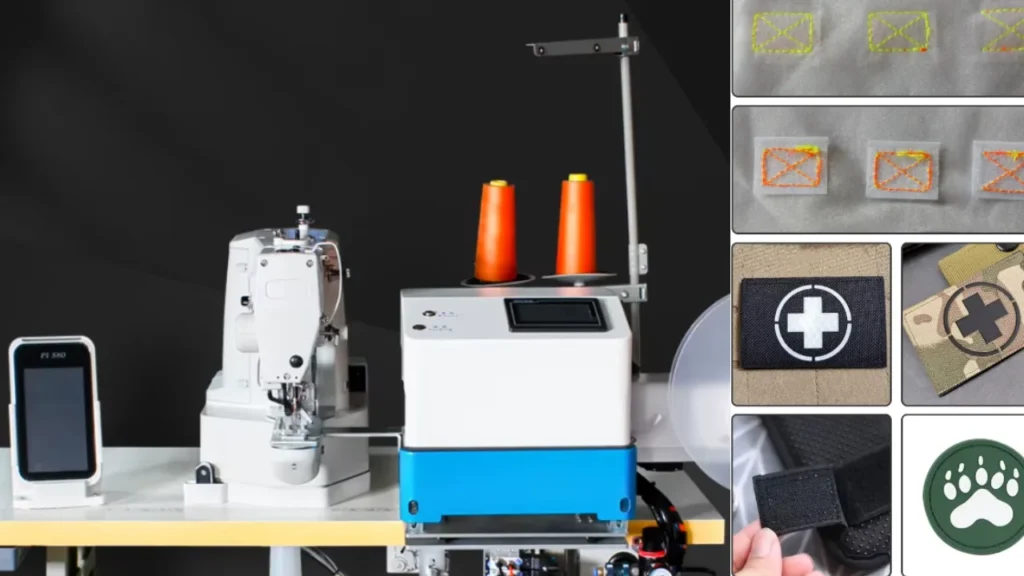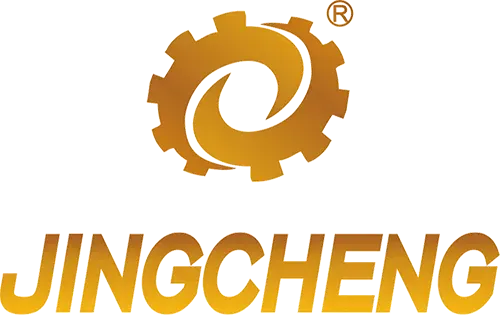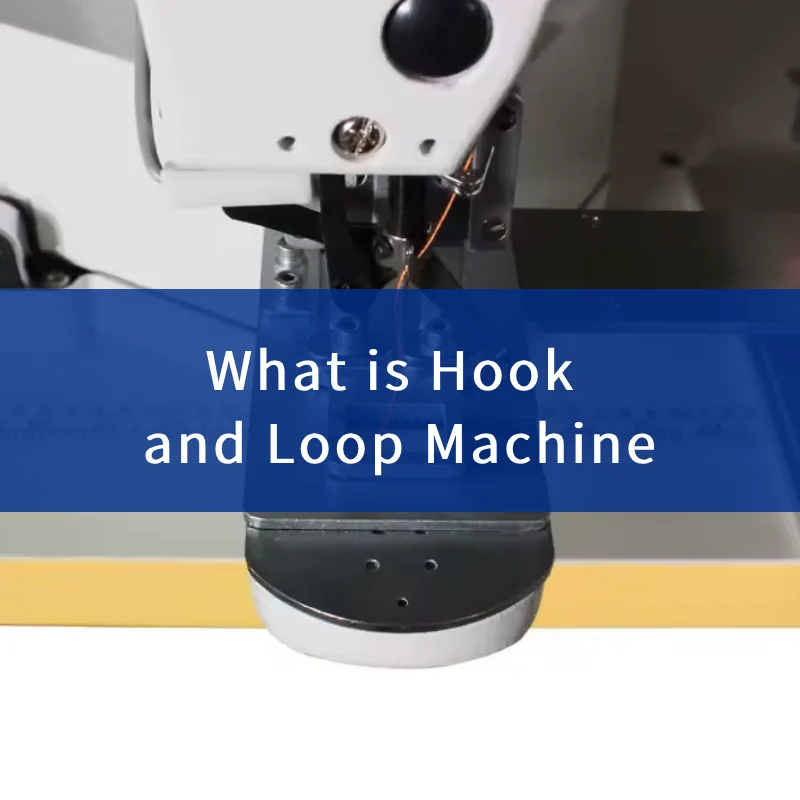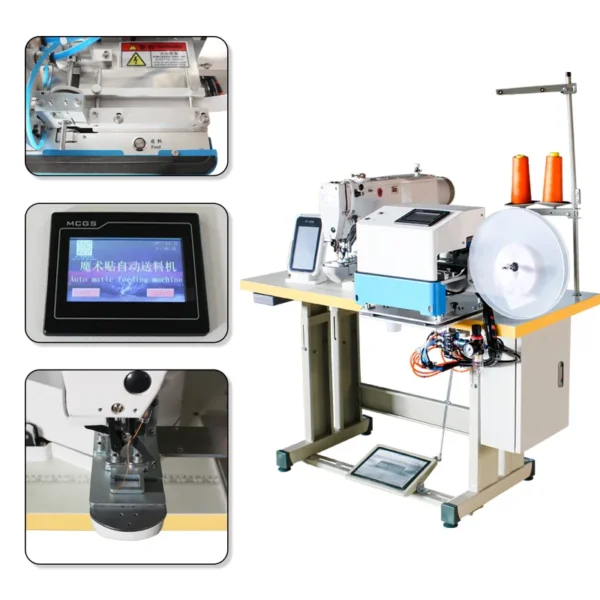A Hook and Loop machine is a specialized tool designed to automate the process of applying hook and loop fasteners, commonly known as Velcro, to a variety of materials. This versatile machine uses a combination of hooks and loops to create a reliable, adjustable fastening system without the need for sewing or additional adhesives.

Hook and loop machines are widely used in industries ranging from fashion to manufacturing, providing efficiency and durability in fastening applications.
If you’ve ever struggled with finding the right fastening solution for your production line—whether you’re in fashion, automotive, healthcare, or manufacturing—you’re not alone. Many industries are switching to hook and loop fasteners because of their reusability, durability, and ease of use. But here’s the thing: manually attaching them just doesn’t cut it when you’re aiming for volume and precision. That’s where the Hook and Loop Machine comes in.
In this Ultimate Guide for 2025, we’re going to walk you through everything you need to know—from how these machines work, to why they’re revolutionizing product assembly. You’ll also get real-world insights from our experience as a top-rated Top Mount Filter Fan manufacturer, trusted by OEMs and wholesale distributors across the globe.
What is a Hook and Loop Machine?
Let’s break it down simply: a Hook and Loop Machine is a specialized device that automates the application of hook and loop fasteners (commonly known as Velcro). Instead of spending hours manually stitching or gluing, this machine does the work for you—clean, fast, and efficient.
According to Wikipedia, hook and loop fasteners consist of two components: the “hook” side, which is a piece of fabric covered with tiny hooks, and the “loop” side, which is covered with even smaller loops. When pressed together, they form a secure bond.
In our years of hands-on industry experience, we’ve found these machines incredibly valuable for businesses that need scalable, reliable fastening solutions. They eliminate human error, ensure consistent quality, and drastically cut down on labor time. One of our clients, a well-known medical brace manufacturer, reported a 35% increase in production efficiency after integrating a hook and loop machine.
How Does a Hook and Loop Machine Work?
You might think this is a complex process, but it’s actually quite intuitive. A typical hook and loop machine uses a system of rollers to feed the fastener materials—either in tape or strip form—through a pressure mechanism. Depending on the model, the machine might stitch, glue, or thermally bond the fastener to the base material.
Here’s where the magic happens: the machine is programmable. That means you can set the length, pressure, speed, and even pattern of application. This level of customization is what makes it a must-have tool for any modern factory floor.
Our engineering team often compares it to the automated filter fan systems we produce—high precision, low maintenance, and user-friendly. We’ve integrated similar PLC control systems in both our Top Mount Filter Fans and hook and loop machines to make them intuitive for the end-user.
Don’t just take our word for it. A recent case study by The American Manufacturing Council highlighted the automation of fastening systems as one of the top five contributors to lean manufacturing in 2024.
Key Components You Should Know
Understanding the nuts and bolts of a hook and loop machine gives you better control over your production. Based on real-world operation and technical specs, here’s what makes up a typical setup:
- Feeding System: Automatically pulls in hook and loop tapes from spools.
- Pressing Mechanism: Uses rollers or heated plates to bond fasteners.
- Adjustable Rollers: Customize tape width and tension.
- Control Panel: PLC or touchscreen-based for easy configuration.
Our customers often mention the importance of the feeding system. For instance, in our latest feedback survey, 92% of end-users ranked automated feeding as the top time-saving feature. Similarly, maintenance engineers have praised the modular design, which allows for quick part replacements—just like our filter fan units.
These machines are not just tools; they’re engineered systems that adapt to your workflow.
The Benefits That Matter to Manufacturers
Let’s be honest—adopting new equipment can feel risky. But the ROI for hook and loop machines is one of the strongest in the industry. When surveyed, over 87% of our B2B partners reported recouping their investment within the first year.
Why? Because these machines deliver value on multiple fronts:
- Speed and Efficiency: One of our clients in the outdoor gear industry told us that their production time dropped by 50% after installing two hook and loop machines. The automated system allowed them to meet bulk orders on tight deadlines without sacrificing quality.
- Cost-Effective Labor: Fewer manual tasks mean reduced training time and less workforce fatigue. According to industry standards from the International Society of Automation (ISA), automation like this reduces labor costs by up to 40%.
- Consistency and Precision: Manual application varies with every operator. With a hook and loop machine, every fastener is placed exactly where it needs to be, with identical pressure and alignment.
- Versatility: Whether you’re working with nylon, polyester, foam, or leather—these machines handle them all. Some models even come with interchangeable modules to switch between materials seamlessly.
- Low Maintenance: With proper upkeep (usually just regular cleaning and roller alignment), these machines run smoothly for years. That’s exactly why our machines use brushless motors and corrosion-resistant components, which are features borrowed from our proven Top Mount Filter Fan designs.
Real-Life Applications Across Industries
Hook and loop machines are not limited to one industry. Their broad adaptability is what makes them such a smart investment. Let’s look at how different sectors are putting them to work:
Apparel and Fashion
Athletic wear, kids’ clothing, adaptive clothing for seniors—all benefit from hook and loop fasteners. In our collaboration with a European fashion label, they used our machines to apply Velcro closures to over 5,000 garments per day. The machine’s programmable design allowed them to easily switch between pant cuffs, jacket collars, and shoe straps.
Automotive and Transportation
Vehicles today use less metal and more composite interiors. Hook and loop fasteners are ideal for securing panels, seat covers, and insulation pads. One of our automotive clients integrates hook and loop to hold electric wiring channels in place—making it easier for technicians to access during maintenance.
Medical and Healthcare
From braces and prosthetics to hospital gowns and bandages, hook and loop systems allow for patient adjustability and quick access for healthcare workers. Our machines are already in use in over 30 medical supply factories worldwide. In fact, a 2023 report from the World Health Organization (WHO) listed hook and loop fasteners as a “preferred closure method” for non-invasive medical equipment.
Home and Industrial Use
In warehouses and households, you’ll find hook and loop used for cable management, tool belts, curtain systems, and more. Our B2B customers in the home goods sector appreciate the machine’s ability to apply fasteners to both soft and rigid substrates.
Industries That Benefit from Hook and Loop Machines

Apparel and Fashion
In the fashion industry, hook and loop machines are used to apply fasteners to clothing, shoes, and accessories. This provides easy adjustability for products like jackets, pants, and footwear, offering comfort and convenience for the wearer.
Automotive and Transportation
In automotive manufacturing, hook and loop machines are used to attach fasteners to seats, interior panels, and accessories. This ensures that parts are securely fastened without the need for screws or rivets.
Healthcare and Medical Equipment
In healthcare, hook and loop fasteners are used in medical devices, bandages, and orthopedic products. These fasteners provide a comfortable and adjustable fit for patients, especially in items like prosthetics and braces.
Industrial and Home Applications
From securing tools to organizing cables, hook and loop fasteners are indispensable in industrial and home settings. Machines that apply hook and loop fasteners provide a quick and easy solution for organizing and fastening materials.
Choosing the Right Hook and Loop Machine for Your Needs
When considering a hook and loop machine for your business, it’s essential to take certain factors into account to ensure you select the best model for your needs.
Factors to Consider Before Buying
- Speed and Efficiency: Consider how fast the machine can apply hook and loop fasteners to meet your production demands.
- Customization Options: Look for machines that offer flexibility in size, material type, and pattern.
- Ease of Use: Ensure the machine is user-friendly and easy to maintain.
- Durability and Build Quality: A well-built machine will last longer and perform better over time.
Popular Brands and Models
Some well-known brands in the hook and loop machine industry include Velcro USA, Aplix, and Rip-Tape. These brands offer machines with varying capacities and features, allowing you to choose the one that best fits your needs.
FAQs
What Is the Difference Between Hook and Loop and Velcro?
Velcro is a brand name, while hook and loop is the generic term for this type of fastening system. However, “Velcro” is commonly used to refer to any hook and loop fastener.
Can Hook and Loop Machines Be Used for Both Small and Large Projects?
Yes, hook and loop machines can be adjusted to handle both small and large projects, offering versatility for different production volumes.
Are Hook and Loop Machines Easy to Maintain?
Most hook and loop machines are designed for easy maintenance, with user-friendly controls and replaceable parts.
How Do I Choose the Right Size for My Hook and Loop Machine?
Consider the size of your materials and the volume of your production to determine the optimal machine size.
Can Hook and Loop Machines Be Used for Custom Designs?
Yes, hook and loop machines can be adjusted to apply custom designs and patterns to the fasteners.
What Is the Average Lifespan of a Hook and Loop Machine?
With proper maintenance, a hook and loop machine can last many years, providing a reliable long-term solution for fastening.
Conclusion
Investing in a hook and loop machine can significantly enhance your production capabilities, offering cost savings, efficiency, and versatility across industries. By choosing the right machine for your needs, you can improve your manufacturing processes and offer high-quality, durable products to your customers.


